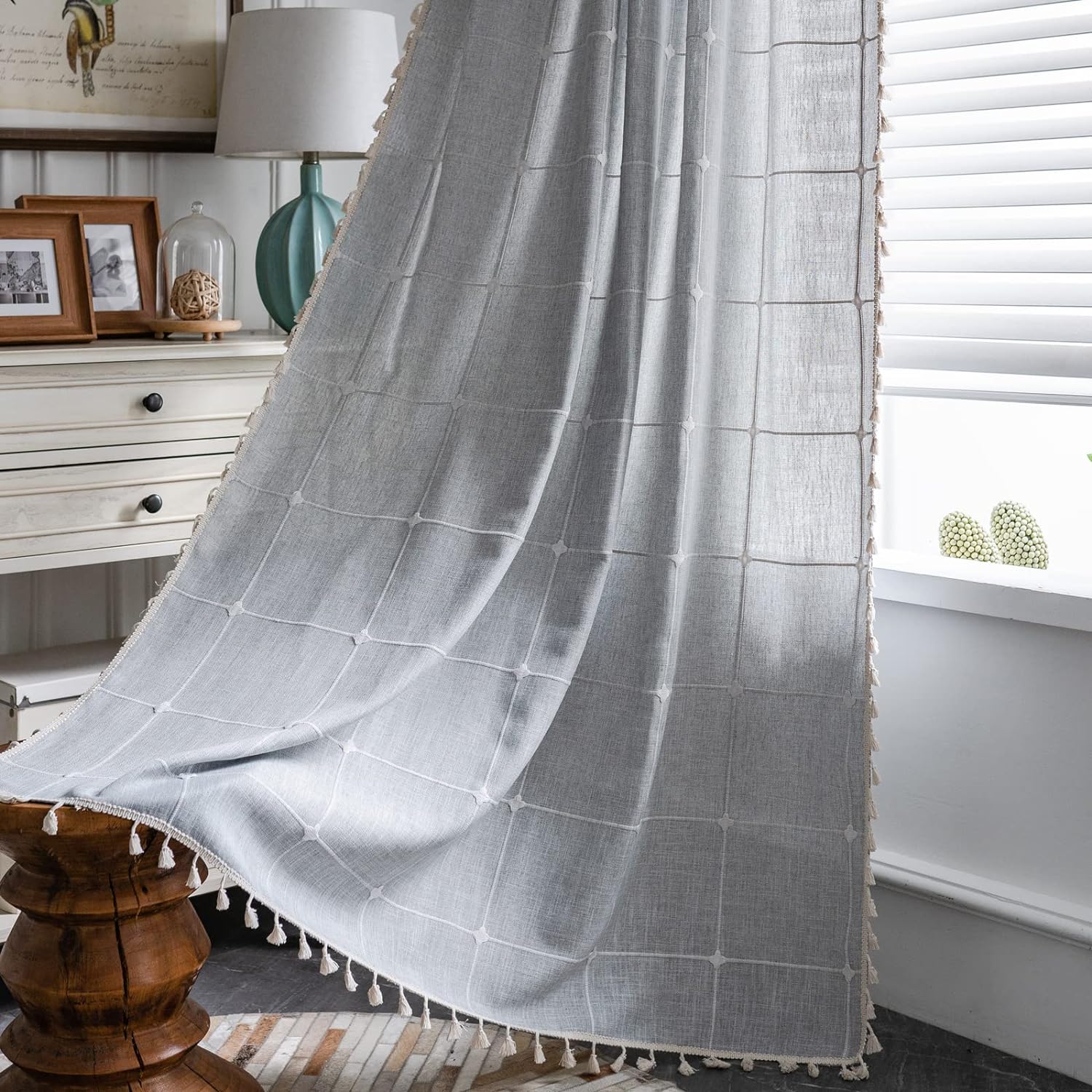Introduction
Embodying a mix of serenity and functional elegance, traditional Swedish design continues to attract and inspire. This design approach emphasizes the harmonious balance of simplicity and utility, traits deeply rooted in the cultural fabric of Sweden and evident in the architectural spirit of Stockholm and Malmö. At the core of traditional Swedish interiors, you’ll find a calming palette of white and neutral tones, complemented by the rich textures of natural materials like wood and stone, sourced from the lush landscapes of southern and northern Sweden. Large windows are a staple, allowing Sweden’s bright light to highlight the minimalist yet warm decor that makes spaces both beautiful and practical.
The essence of Swedish home decor lies in its commitment to combining traditional influences with modern touches, creating environments that are timeless yet modern. Iconic Swedish designers and brands, from Svenskt Tenn to IKEA, have mastered the art of blending modern aesthetics with classic design elements, seen in everything from the sleek lines of furniture to the subtle charm of decorative vases and floral designs. Textiles play a crucial role, with linen and wool offering comfort and warmth, while vintage and antique items add unique character to any room. The incorporation of these elements underlines a longstanding tradition of craftsmanship and design excellence that is recognized internationally, making Swedish interior design a model of style and functionality.
Key Takeaways
- Traditional Swedish design blends white and neutral paints, creating serene and calm atmospheres.
- Large windows in Swedish homes bring in abundant natural light, enhancing the brightness of spaces.
- Greenery plays a significant role in adding freshness and life to Swedish interiors.
- Simplicity and functionality are key aspects of Swedish design, making spaces practical yet beautiful.
- Natural materials like wood and stone bring warmth and texture to Swedish home decor.
- Vintage or antique pieces are often incorporated to add character and charm to Swedish design.
Exploring Swedish Interior Design Traditions
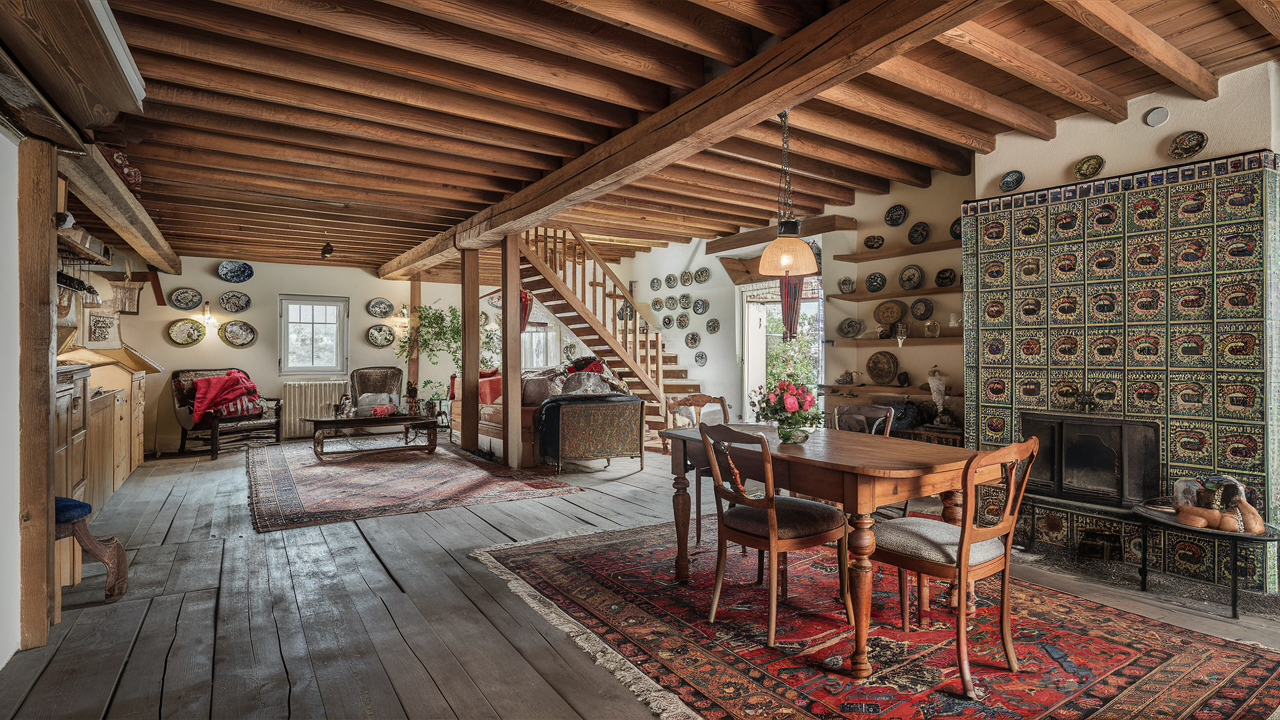
Swedish interior design traditions have a unique charm and elegance that have captured the hearts of many. The timeless and functional principles of Scandinavian architecture form the foundation of this sought-after style. In Swedish country homes, you will find a blend of white and neutral paints that create a serene and calm atmosphere. The use of natural light is also prominent, with large windows bringing in an abundance of sunshine. Greenery plays a significant role in adding freshness and life to these spaces. Another key aspect of Swedish design is the simplicity and functionality of each room, making every space practical yet beautiful. Embracing these traditions can transform any home into a cozy and inviting sanctuary.
-
Use of Light and Neutral Color Palettes: Traditional Swedish design homes favor a color palette that emphasizes light and neutral shades, such as whites, creams, and soft grays. These colors not only reflect the natural outdoor light but also create a sense of calm and serenity in the interior space.
-
Incorporation of Natural Materials: Swedish interiors commonly use materials like wood and stone to add warmth and texture. This use of natural elements is a core aspect of Scandinavian design, promoting a connection to the natural world while enhancing the home’s cozy and inviting atmosphere.
-
Functional Furniture with Simple Lines: Furniture in Swedish design is characterized by functionality and simplicity. The focus is on clean, minimalist lines and practicality, ensuring that each piece is both useful and visually appealing, without unnecessary decoration.
-
Integration of Textiles for Comfort: Soft furnishings such as wool throws, linen curtains, and handwoven rugs are integral to Swedish home decor. These elements add layers of texture and comfort, crucial for creating a warm and welcoming environment.
-
Blending Traditional and Modern Elements: Modern Swedish design often involves a fusion of classic elements with contemporary aesthetics. This blend is seen in the seamless incorporation of modern art, graphic design, and iconic furniture pieces from famous Swedish designers like Alvar Aalto and Ikea innovations, which respect historical motifs while introducing modern flair.
Swedish Home Decor Elements
Swedish home decor elements are characterized by simplicity, functionality, and elegance. The focus is on creating a cozy and inviting atmosphere. Clean lines and minimalistic designs are key features of Swedish interior design. Natural materials such as wood and stone are commonly used to bring warmth and texture to the space. Swedish homes also embrace the use of textiles, such as linen and wool, to add comfort and softness. Additionally, vintage or antique pieces are often incorporated to add character and charm to the overall design.
Traditional Swedish Color Palette
In a traditional Swedish home, the color palette is typically calm and soothing. Soft, muted hues are favored, creating a sense of tranquility and serenity. Shades of white, such as creamy off-whites and warm ivories, form the base of the color scheme, reflecting the importance of light in Swedish design. These neutral tones are often paired with accents of pale blues, gentle grays, and subtle greens to add depth and interest to the space. The overall effect is a timeless and understated elegance that celebrates the natural beauty of the surroundings.
Incorporating Minimalism and Functionality
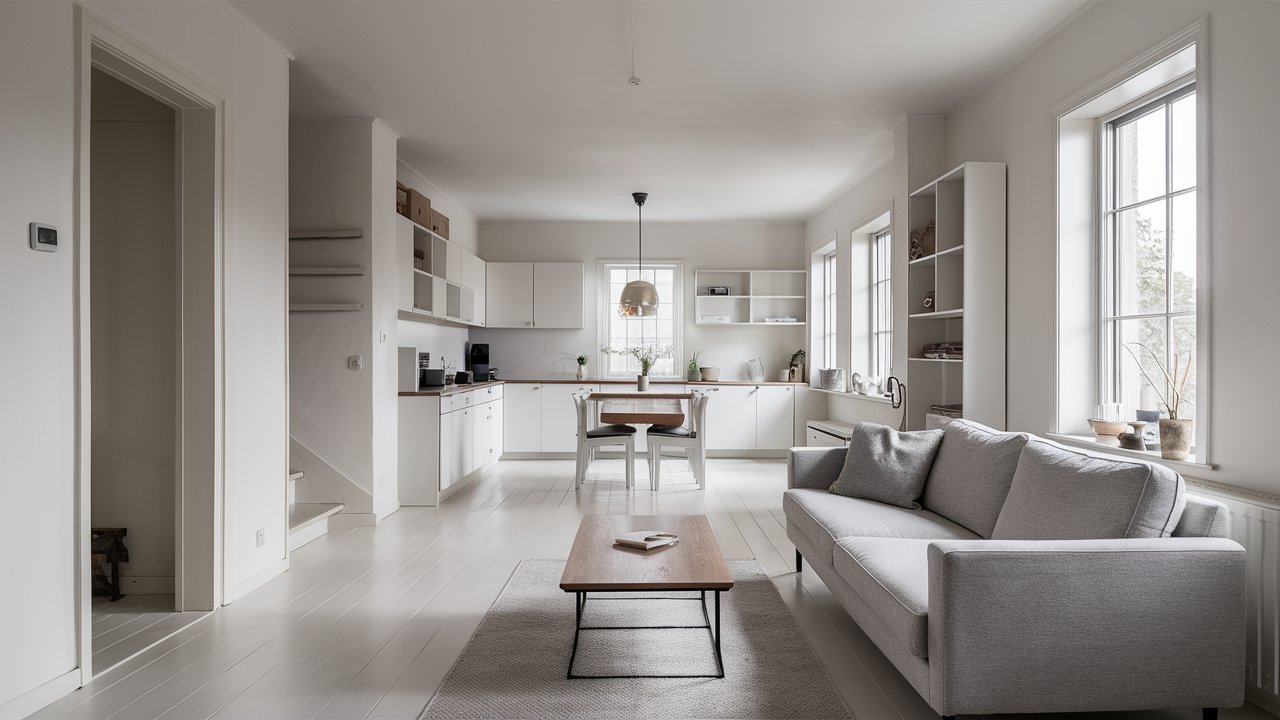
When modernizing a traditional Swedish home, incorporating minimalism and functionality is key. By embracing a minimalist approach, homeowners can create a sense of calm and clarity in their space. This design philosophy values simplicity and aims to reduce clutter, allowing the beauty of each element to shine through.
With minimalism, the focus is on selecting furniture and decor that serves a purpose and adds value to the overall design. Utilizing clean lines, sleek finishes, and natural materials can help achieve this desired aesthetic.
Functionality is also an essential aspect of Swedish interior design. Spaces are thoughtfully designed to be efficient and practical, making daily tasks easier and more enjoyable. From clever storage solutions to multi-purpose furniture pieces, every element serves a purpose while still maintaining an elegant and streamlined look.
By incorporating minimalism and functionality into a traditional Swedish home, homeowners can create a harmonious and inviting space that combines modern aesthetics with timeless Scandinavian design principles.
| Element | Description | Examples |
|---|---|---|
| Color Palette | Focus on light and neutral colors to enhance natural light and create a calming atmosphere. | Whites, creams, soft grays |
| Furniture Design | Select pieces that are minimalist with clean lines and functional design, emphasizing the lack of ornamentation. | Streamlined sofas, minimalist tables |
| Materials | Use natural materials that are not only sustainable but also add warmth and texture to the spaces. | Wood, stone, linen, wool |
| Storage Solutions | Implement smart storage options that maximize space efficiency and maintain a clutter-free environment. | Built-in cabinets, modular shelving |
| Decor | Incorporate elements that serve a purpose and enhance the overall aesthetic without contributing to clutter. | Functional art pieces, minimalist decor |
| Spatial Design | Design spaces to be open and airy, making use of strategic furniture placement to enhance functionality and flow. | Open floor plans, multi-use areas |
This table outlines key strategies for modernizing a traditional Swedish home by incorporating minimalism and functionality. Each element is carefully selected to ensure that the interior not only looks aesthetically pleasing but is also practical for daily living, adhering to the timeless principles of Scandinavian design.
Modern Minimalist Furniture
Modern minimalist furniture, a cornerstone of Swedish interior design, is lauded for its sleek lines, clean shapes, and minimal ornamentation. Rooted in functionality and simplicity, every piece, from streamlined sofas and minimalist dining tables to functional storage units, serves a distinct purpose. These furniture designs, often associated with notable Swedish furniture designers and design brands, emphasize spaciousness and calm. Renowned for their understated elegance, such pieces contribute to a harmonious, clutter-free environment, perfectly aligning with the principles of furniture design and architecture and design. This approach reflects the Swedish design today, marked by a blend of art and design craftsmanship and design industry innovation.
Functional Design Solutions
Functional design solutions play a crucial role in Swedish interior design, focusing on creating spaces that are not only aesthetically pleasing but also practical and efficient. Scandinavian homes embrace minimalist and smart designs, which maximize the functionality of every area. With compact spaces, multifunctional furniture pieces become essential. Swedish homes often feature clever storage solutions, such as built-in cabinets and modular shelving units. These functional design elements help to keep the space organized and clutter-free, allowing for a seamless flow throughout the home. Additionally, thoughtful placement of furniture and accessories creates open and airy spaces, making the rooms feel more spacious than they actually are.
Embracing Natural Light and Organic Materials
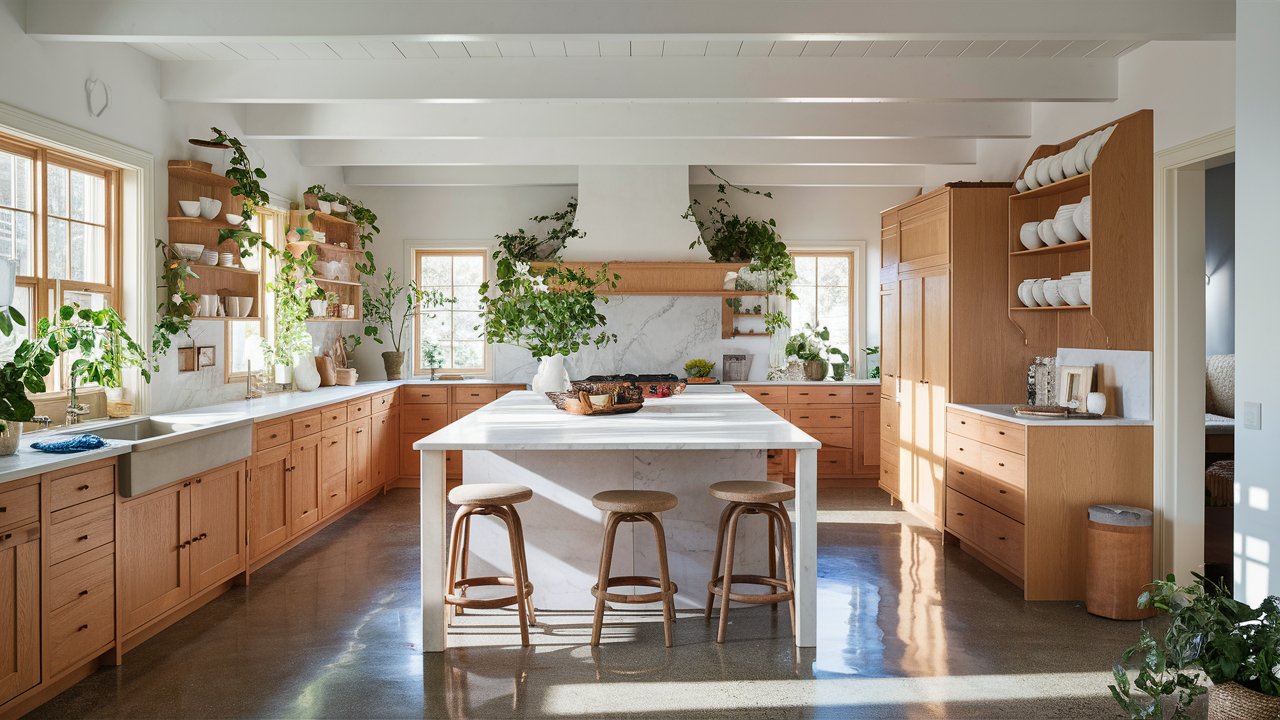
Swedish interior design embraces the use of natural light and organic materials to create a serene and inviting atmosphere. By maximizing the use of natural light sources, such as large windows and skylights, Swedish homes are filled with an abundance of daylight, making the space feel bright and airy.
Organic materials, such as wood, stone, leather, and wool, are commonly used in Swedish interior design. These materials add warmth and texture to the space, creating a cozy and comfortable environment. Whether it’s hardwood flooring, exposed wooden beams, or natural stone countertops, incorporating organic materials brings a sense of nature indoors.
The integration of natural light and organic materials not only enhances the aesthetics of a traditional Swedish home but also promotes a connection to the outdoors. It brings a sense of tranquility and harmony to the space, allowing one to unwind and relax in a peaceful environment. With these elements in place, Swedish interior design creates a timeless and inviting sanctuary for everyone to enjoy.
Utilizing Natural Light Sources
Natural light is a highly valued element in Swedish interior design, reflecting a deep relationship to nature and an appreciation for good light. To fully utilize natural light sources, Swedish homes, often designed by architects and designers who specialize in maximizing environmental harmony, incorporate large windows and skylights. These features allow for an abundance of daylight to flood into the space, creating a bright and energizing atmosphere. By strategically placing windows in key areas, such as living rooms and bedrooms—spaces that are central to Swedish life and culture—the interior can benefit from sunlight throughout the day. This approach not only reduces the need for artificial lighting but also strengthens the connection to the outdoors, enhancing the overall sense of well-being in the home and embodying the core principles of Swedish design.
Integration of Sustainable Materials
Swedish interior design embraces sustainability and eco-consciousness by integrating sustainable materials into the home. This includes utilizing renewable resources such as bamboo, cork, and reclaimed wood for flooring and furniture. These materials not only add a touch of natural beauty but also reduce the environmental impact of the home. Additionally, Swedish homes often incorporate energy-efficient appliances and fixtures to minimize energy consumption. By integrating sustainable materials, homeowners can create a space that is both stylish and environmentally friendly.
Adding Contemporary Touches
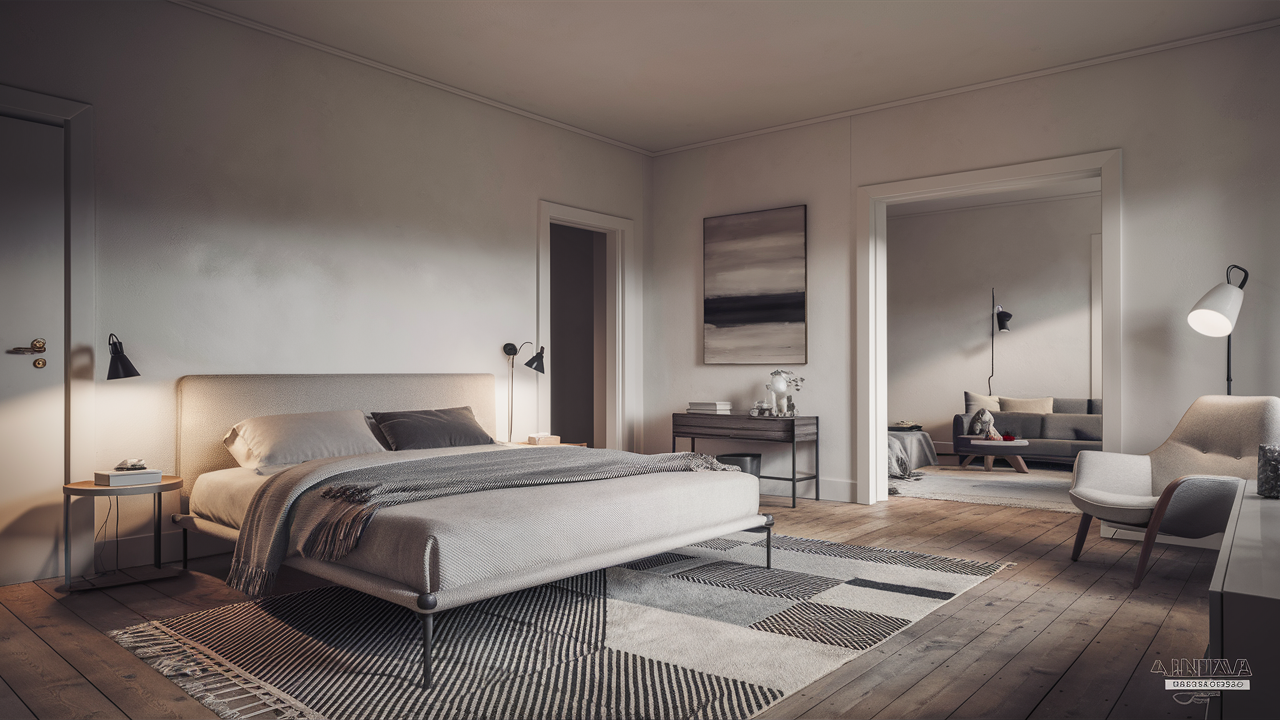
Adding contemporary touches to a space involves integrating elements that reflect modern Swedish design while respecting the traditions from the 1930s. Interior designers often work with design companies specializing in product design to create environments that balance modern aesthetics with practical functionality. Elements like glasswork from Orrefors or tableware from Kosta Boda can serve as focal points. Including pieces by Monica Förster or using textiles designed by Astrid Sampe (known for her modernist, mid-century textiles) adds layers of historical depth and artistic flair. This blend of old and new is further enhanced by the inclusion of elements from Swedish architecture, making the space both innovative and recognizable.
Blending Traditional and Modern Styles
Blending traditional and modern styles, the homeowners can give their Swedish home a fresh and updated look. By incorporating sleek furniture pieces with clean lines, they can achieve a modern aesthetic while still maintaining the charm of traditional Swedish design. Mixing old and new elements creates a dynamic and visually appealing environment that combines the best of both worlds. This fusion of styles adds character and uniqueness to the space, making it a truly special place to call home.
Incorporating Scandinavian Art and Accessories
Incorporating Scandinavian art and accessories adds a touch of charm and personality to a traditional Swedish home. Scandinavian art is known for its simplicity, minimalism, and nature-inspired themes. Homeowners can hang paintings or prints that feature landscapes, botanical motifs, or abstract designs to create a focal point in a room. Additionally, adding accessories such as handmade ceramics, wooden sculptures, or woven textiles can enhance the Scandinavian aesthetic and bring warmth and texture to the space. By carefully selecting art and accessories that reflect the homeowners’ personal style, they can infuse their home with a touch of Nordic inspiration.
“Beauty, comfort, and functionality must be blended in harmony to create an enduring design. In blending the old with the new, we keep the traditions alive but rejuvenated.” – Greta Magnusson Grossman
Transforming Spaces with Nordic Patterns

Nordic patterns, rooted in the craft and design history of the Nordic countries, have the power to transform spaces and add a touch of Scandinavian charm. Renowned for their simplicity, geometric shapes, and clean lines, these patterns are a staple in Scandinavian design, dating back to the early 20th century. By incorporating Nordic textile patterns into home decor, homeowners can create a cozy and inviting atmosphere. Whether it’s using a traditional Fair Isle pattern on pillows or adding a bold graphic print on curtains, these patterns bring depth and visual interest to a room. Additionally, using geometric prints on rugs or wallpapers can make a space feel modern and stylish. Nordic patterns effortlessly blend with other design elements, making them versatile for any interior style, from public spaces to personal homes based in Stockholm.
Nordic Textile Patterns
Nordic textile patterns are known for their intricate and beautiful designs. These patterns draw inspiration from nature, incorporating motifs such as trees, animals, and flowers. They often feature geometric shapes and clean lines, which add a modern touch to traditional designs. Nordic patterns are commonly found on textiles such as blankets, rugs, and curtains, bringing warmth and charm to any space. Whether it’s a classic Swedish Dala horse pattern or a contemporary Scandinavian geometric print, these textile patterns add a unique and timeless flair to home decor.
Use of Geometric Prints
Geometric prints play a significant role in modernizing traditional Swedish homes. These patterns add a contemporary and artistic touch to the interior design. They feature clean lines, shapes, and harmonious color combinations that create a visually striking impact. Geometric prints can be found on various elements such as wallpapers, textiles, and artwork. They bring a sense of order and balance while infusing the space with a touch of sophistication. Whether it’s a bold geometric pattern on a rug or subtle geometric motifs on cushions, these prints add a dynamic and modern vibe to any room.
- 2 Panels Embroidery Lattice Cotton Linen
- Darkening Curtains with Tassel Rod Pocket Window Drapes
- Dining Living Bedroom
- (52" W x 63" L, Grey)
Conclusion
As we reflect on the essence of traditional Swedish design, its impact on contemporary interiors remains profound. This style, rooted in the balance of simplicity and functionality, showcases a deep respect for craftsmanship and a thoughtful use of natural materials like wood and stone. Emphasized by iconic figures such as Josef Frank and companies like Kosta Boda and Rörstrand, the modernist flair within this traditional context highlights a long tradition of design excellence. Large windows and the strategic use of natural light complement the minimalist yet practical spaces that define Swedish interiors, making each area not only functional but also inviting.
This design philosophy not only enhances the daily living experience but also aligns with sustainable practices through its integration of reclaimed materials and emphasis on functionality. As Swedish design continues to evolve, it remains influential on the international design stage, marked by its iconic simplicity and elegant utility. Whether it’s through the timeless pieces of Georg Jensen or the innovative textiles of Kasthall, traditional Swedish design continues to inspire a global audience, maintaining its place as a cornerstone of good, sustainable, and functional design.
James Dunnington leads the James Dunnington Collection, featuring five unique blogs: a practical Pet Care Guide, an enlightening Ancient History Blog, a resourceful Home Improvement Guide, a cutting-edge Tech Innovation Guide, and a strategic Online Money Making platform. Each site delivers valuable insights designed to empower and inform. For updates and more tips, visit our Contact Us page to sign up for our newsletter, ensuring you never miss out on the latest content from any of these dynamic fields.
